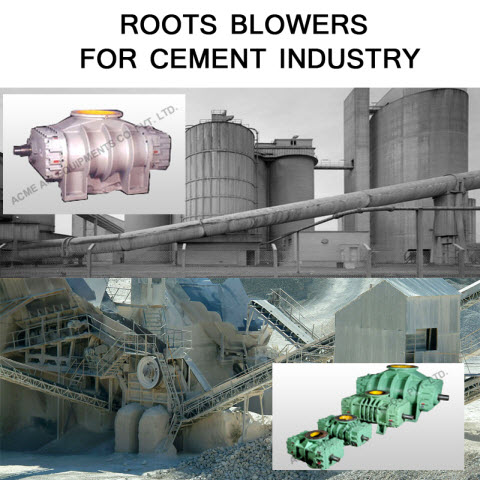Table of Contents
In the realm of industrial processes, the application of theoretical concepts to practical solutions is the driving force behind efficiency and productivity. Positive displacement blowers, often referred to as rotary lobe blowers, exemplify the successful transition from theory to practice. This article explores how positive displacement blowers translate theoretical principles into tangible benefits, enhancing a wide range of industrial operations.
Introduction
Theoretical concepts form the foundation of innovation, and their practical application drives progress in various industries. Positive displacement blowers stand as exemplars of how theoretical principles are translated into real-world solutions to enhance industrial operations.
Positive Displacement Blowers: Bridging Theory and Practice
Theoretical Foundations of Positive Displacement
Positive displacement is a theoretical concept that involves trapping a fixed volume of air or gas and transporting it through a system. This concept forms the basis for positive displacement blowers’ operation.
The Role of Positive Displacement Blowers
Positive displacement blowers serve as the embodiment of positive displacement theory. They harness theoretical principles to provide a continuous and reliable flow of air or gas, making them indispensable in numerous industrial processes.
The Mechanism Behind Positive Displacement Blowers
Rotary Lobe Design
Positive displacement blowers feature a rotary lobe design, where two lobes rotate within a housing. As the lobes intermesh, they create chambers that trap and transport air or gas.
Trapping and Transporting Air or Gas
The rotational motion of the lobes leads to the intake of air or gas into the chambers. Subsequent rotation causes the trapped air or gas to be transported through the system, ensuring a consistent flow.

Enhancing Industrial Operations with Positive Displacement Blowers
Wastewater Treatment and Aeration
Positive displacement blowers play a vital role in wastewater treatment by providing aeration for aerobic microorganisms. The continuous flow of air promotes efficient organic matter breakdown.
Material Handling and Pneumatic Conveying
In material handling and pneumatic conveying systems, positive displacement blowers facilitate the movement of bulk materials through pipelines using air or gas, optimizing efficiency.
Chemical and Petrochemical Processes
Positive displacement blowers are integral to chemical and petrochemical processes, supporting gas circulation, vapor recovery, and vacuum creation essential for various reactions.
Food and Beverage Manufacturing
In food and beverage manufacturing, positive displacement blowers ensure controlled air movement for processes such as drying, cooling, and packaging, maintaining product quality.
Advantages of Positive Displacement Blowers
Constant Volume Discharge
Positive displacement blowers offer constant volume discharge, ensuring a consistent flow regardless of variations in pressure, contributing to process stability.
Adaptability to Changing Conditions
Positive displacement blowers can adapt to changing process conditions without compromising efficiency. Their ability to maintain flow makes them versatile in dynamic environments.
Gentle Handling of Media
The gentle displacement mechanism of these blowers minimizes product degradation or damage during transportation, making them suitable for delicate materials.
Tailored Solutions for Specific Applications
Customization for Diverse Industries
Positive displacement blowers can be tailored to meet the unique requirements of various industries. Custom modifications enable them to address specific challenges effectively.
Sizing and Performance Optimization
Sizing positive displacement blowers to match the demands of specific applications optimizes performance and efficiency, leading to resource and energy savings.
Energy Efficiency and Environmental Considerations
Efficient Air Movement
Positive displacement blowers prioritize efficient air movement, reducing energy consumption and contributing to a more sustainable industrial operation.
Sustainable Design Approaches
Advancements in design focus on sustainability, incorporating features like variable frequency drives (VFDs) and energy-efficient components to minimize environmental impact.
Real-world Applications and Success Stories
Case Studies of Positive Impact
Numerous industries have witnessed the positive influence of these blowers. Success stories abound in sectors such as water treatment, manufacturing, and energy production.
Operational Improvements and Cost Savings
Real-world applications demonstrate how positive displacement blowers enhance operational efficiency, reduce downtime, and yield cost savings over time.
Overcoming Challenges and Advancing Innovations
Noise Reduction Strategies
Innovations aim to reduce operational noise, enhancing workplace conditions and minimizing environmental noise pollution.
Performance Enhancements
Continuous innovations target improvements in blower performance, efficiency, and durability through design refinements and material advancements.
The Future of Positive Displacement Blowers
Integration with Industry 4.0
Positive displacement blowers are poised to integrate with Industry 4.0 technologies, enabling remote monitoring, predictive maintenance, and data-driven optimization.
Continued Technological Advancements
The future holds promise for advanced designs and engineering solutions that align positive displacement blowers with evolving industry demands.
Conclusion
Positive displacement blowers embody the successful transition from theoretical concepts to practical solutions that enhance industrial operations. Their ability to seamlessly move air and gases while aligning with sustainability goals makes them indispensable assets in various sectors. As industries continue to evolve, positive displacement blowers will undoubtedly continue to play a pivotal role in driving operational efficiency, cost savings, and environmental responsibility.



